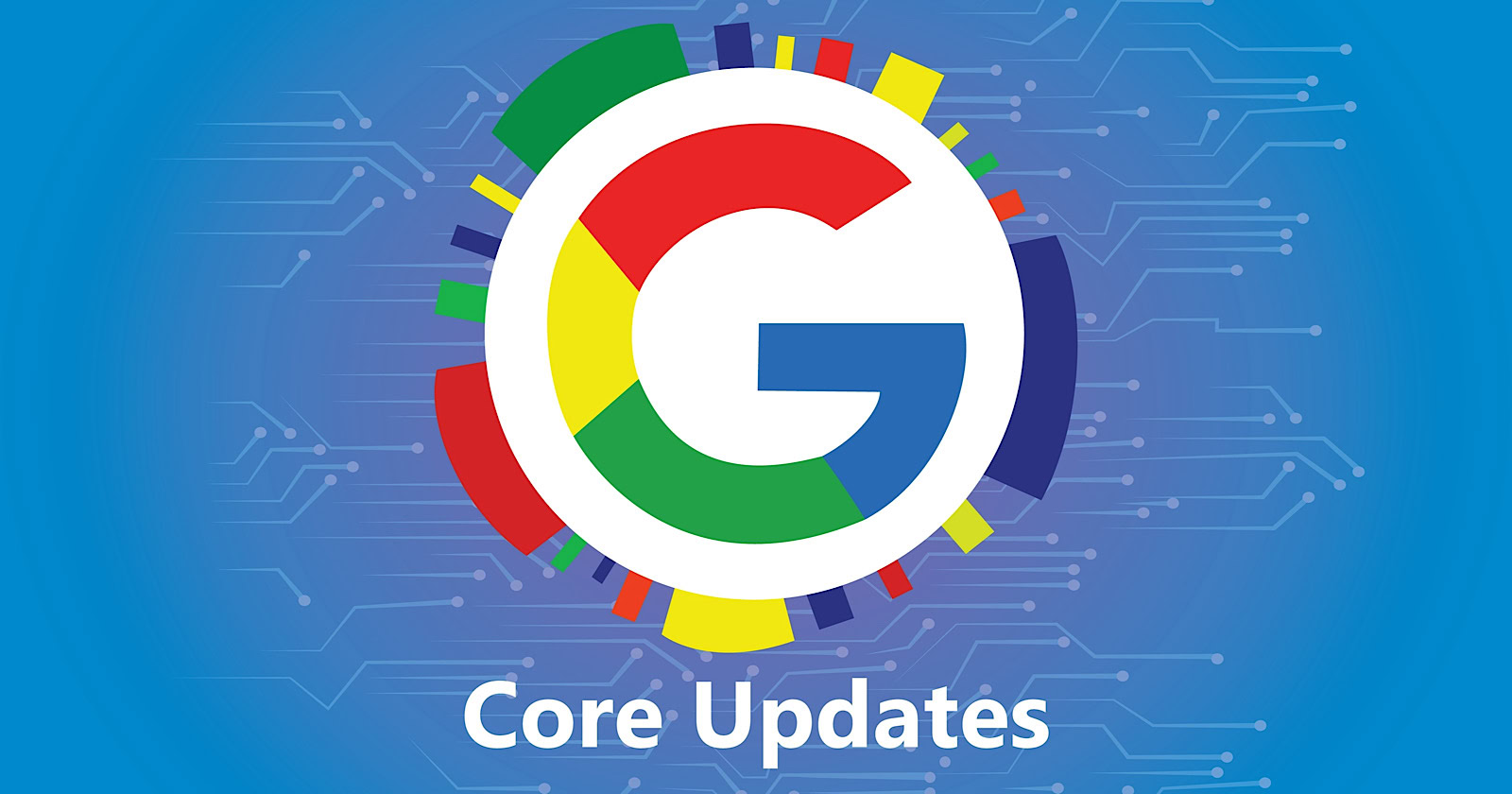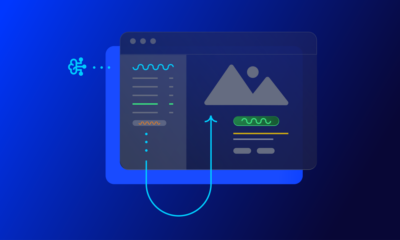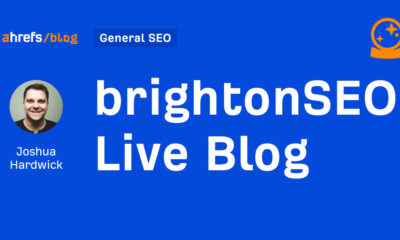SEO
SEO Competitive Analysis: The Definitive Guide

Marketing is all about explaining to potential customers why your product fits their needs the best. To know that, you need to know what your competitors are offering.
The only way to do that is through competitor analysis – studying what your competitors are doing.
You have to build the best product and the best content you can, and knowing what your competitors are doing is a part of that.
This guide includes best practices that will help you identify your competitors, how they rank, and what you can do about it. And make sure to combine these tips with your favorite competitor research tools!
1. Identify Your SEO Competitors
You probably already know who the big players in your industry are, but can you name your main SEO rivals?
They aren’t necessarily the same.
In fact, you might have multiple SEO competitors who exist outside of your niche that you need to contend with in SERPs.
For example, a bakery in New York trying to rank for keywords like “best bread in New York” would be competing with other bakeries for first-page results.
Advertisement
Continue Reading Below
But if that bakery was also trying to rank a helpful how-to blog, they’d be competing with publishing giants like Food Network and Taste of Home, too.
They’d have their work cut out for them if they wanted to break the top 10 in those SERPs!
This is true in every industry:
Your top SEO competitors are the ones who rank on the first search page of the keywords you’re targeting, regardless of whether they’re your business competitors.
If you operate in multiple niches, you may even have distinct lists of competitors for each service you offer with little-to-no overlap between them.
Fortunately, finding out who your competitors are is as easy as entering your top keywords into Google and writing down the domains of your main competitors (or entering your keywords into your competitor analysis tool and letting it do all of the heavy lifting for you).
Even if you’re using a tool, it’s in your best interest to monitor the SERP landscape you’re entering into (e.g., if your target keyword is dominated by videos, you probably want to think about creating video content to compete).
Advertisement
Continue Reading Below
Pay special attention to competitors occupying local packs and the position zero too – you should definitely compete for these coveted spots!
2. Evaluate Keyword Difficulty
Before you begin analyzing specific link-building strategies or on-page SEO, it’s a good idea to assess the strength of your SEO competitors.
While you can theoretically beat out any competitor in any niche and for any keyword, the amount of resources it would take for some keywords renders them unfeasible.
Use your competitor analysis tool to look at your competitors’ total domain strength and then analyze specific factors, such as:
Write down the information and look for any weaknesses that you can turn to your advantage.
The higher the difficulty of a target competitor, the stronger their SEO, and the harder it will be to outrank them.
Focus on competitors with lower overall scores ranking well for niche keywords.
3. Look For New Keyword Opportunities
Term frequency-inverse document frequency analysis (or, because that’s a mouthful, TF-IDF analysis) can be a useful method for enriching your existing content with “proper” keywords your competitors are using.
This allows you to properly optimize your pages for search engines, or to discover low-competition keywords you might have missed.
Simply put, TF-IDF is a measurement of how often a keyword appears on a page (term frequency) multiplied by how often a keyword is expected to appear on page (inverse document frequency).

When you analyze TF-IDF you might discover that most top-ranking pages for your target keywords share many similar terms and phrases.
Advertisement
Continue Reading Below
If you aren’t targeting those topic-relevant terms, then you need to either add them to existing applicable pages or create new content to boost your relevance in semantic search.
This concept is a little more complicated than any of the other strategies we’ll discuss but it can quickly become a vital part of creating a comprehensive content strategy.
For example, using TF-IDF, we discovered that high-ranking content for the keyword “coffee brewing recipes” almost always contains specific information about different coffee bean blends, roasting techniques, and types of filters.
4. Analyze On-Page Optimization & On-Site Content
Using your competitive analysis tool to analyze your competitors’ on-site SEO will give you a veritable goldmine of new information to work with.
You’ll learn how often they’re publishing content, what types of content they’re publishing, and which keywords they’re targeting.
Pay special attention to:
Advertisement
Continue Reading Below
Try to unravel their internal linking strategies, too. Use this information as a benchmark for your on-site SEO efforts.
Figure out what they’re doing well so you can learn from it, and what they’re missing so you can do it better.
When analyzing content, you’ll want to keep track of:
- Topical relevance.
- What types of content or media they’re creating.
- Video length or word count.
- The depth of detail covered.
When Googlebot crawls your website, all of these play a significant role.
5. Dig Into Competitor Backlink Profiles
One of the most important parts of a competitive analysis is figuring out where your rivals are earning their backlinks from and using that information to build high-quality links for your website.
Dissecting your opponents’ link profiles is a great way to find new link opportunities.
Again, you’ll need a robust SEO tool for this step – it’s practically impossible to pull off manually.
Advertisement
Continue Reading Below
6. Examine Site Structure & UX
If you don’t know that Google’s been hyper-focused on improving user experience then you haven’t been paying attention.
Almost all of the major algorithmic changes we’ve seen over the past few years have been focused on UX – better mobile experiences, faster pages, and improved search results.
If your website is slower than your competitors’, unresponsive, or more confusing to navigate then that’s something you absolutely need to correct. I recommend:
To see what your competitors are doing, you’ll want to take a look at their landing pages:
- Analyze their click depth.
- See if they have any orphan pages.
- Check out their PageRank distribution.
Advertisement
Continue Reading Below
If you analyze competitor sites and see that they’re ranking well despite having an outdated website or terrible mobile optimization, that’s a prime opportunity for you to gain some real estate on SERPs.
7. Learn How They’re Leveraging Social Media
The exact nature of how social media intersects with SEO is hotly contested, but few optimization specialists would disagree that it’s an important element of any healthy SEO strategy.
Of course, that’s because a good social listening tool does way more than up-to-date you on every new cat meme your competitor is tweeting.
A good social listening tool enables you to:
- Increase website traffic by tracking linkless mentions on social media and engaging with your audience – especially when people are specifically using or looking for your product.
- Track brand mentions off social media platforms and do the same thing (a good social listening tool should be able to monitor news sites, blogs, forums, etc.).
- Monitor user sentiment.
Some easy research you can perform includes monitoring:
- Which platforms your competitors are (or are not) using.
- How often they publish new content.
- How they communicate with their followers.
- Which types of content get the most engagement.
Advertisement
Continue Reading Below
You may even want to track competitor linkless mentions, user reviews, and PR so that you can see what their customers like about their product or service – and what you could do better.
8. Try To Track Competitor Ad Spend
If you’ve done everything you can to optimize your website and you’re still getting beat in the SERPs, it’s possible that your competitors are simply outspending you and using paid traffic campaigns to generate conversions and sales.
I recommend against trying to match each competitor’s spending tit for tat, but you may find it valuable to monitor their Google Ads campaigns, promoted content, banner ads, paid posts, and more so that you can at least gauge what other people in your niche are spending on advertising.
Conclusion
Now that you have a handle on competitive analysis, the only thing left to do is keep at it.
Continue making small improvements, keeping tabs on your competitors, and monitoring your rankings.
Advertisement
Continue Reading Below
Eventually, your hard work should pay off and you’ll start to improve your position.
More Resources:
Featured Image: BusyPic/Shutterstock
SEO
Google March 2024 Core Update Officially Completed A Week Ago

Google has officially completed its March 2024 Core Update, ending over a month of ranking volatility across the web.
However, Google didn’t confirm the rollout’s conclusion on its data anomaly page until April 26—a whole week after the update was completed on April 19.
Many in the SEO community had been speculating for days about whether the turbulent update had wrapped up.
The delayed transparency exemplifies Google’s communication issues with publishers and the need for clarity during core updates
Google March 2024 Core Update Timeline & Status
First announced on March 5, the core algorithm update is complete as of April 19. It took 45 days to complete.
Unlike more routine core refreshes, Google warned this one was more complex.
Google’s documentation reads:
“As this is a complex update, the rollout may take up to a month. It’s likely there will be more fluctuations in rankings than with a regular core update, as different systems get fully updated and reinforce each other.”
The aftershocks were tangible, with some websites reporting losses of over 60% of their organic search traffic, according to data from industry observers.
The ripple effects also led to the deindexing of hundreds of sites that were allegedly violating Google’s guidelines.
Addressing Manipulation Attempts
In its official guidance, Google highlighted the criteria it looks for when targeting link spam and manipulation attempts:
- Creating “low-value content” purely to garner manipulative links and inflate rankings.
- Links intended to boost sites’ rankings artificially, including manipulative outgoing links.
- The “repurposing” of expired domains with radically different content to game search visibility.
The updated guidelines warn:
“Any links that are intended to manipulate rankings in Google Search results may be considered link spam. This includes any behavior that manipulates links to your site or outgoing links from your site.”
John Mueller, a Search Advocate at Google, responded to the turbulence by advising publishers not to make rash changes while the core update was ongoing.
However, he suggested sites could proactively fix issues like unnatural paid links.
“If you have noticed things that are worth improving on your site, I’d go ahead and get things done. The idea is not to make changes just for search engines, right? Your users will be happy if you can make things better even if search engines haven’t updated their view of your site yet.”
Emphasizing Quality Over Links
The core update made notable changes to how Google ranks websites.
Most significantly, Google reduced the importance of links in determining a website’s ranking.
In contrast to the description of links as “an important factor in determining relevancy,” Google’s updated spam policies stripped away the “important” designation, simply calling links “a factor.”
This change aligns with Google’s Gary Illyes’ statements that links aren’t among the top three most influential ranking signals.
Instead, Google is giving more weight to quality, credibility, and substantive content.
Consequently, long-running campaigns favoring low-quality link acquisition and keyword optimizations have been demoted.
With the update complete, SEOs and publishers are left to audit their strategies and websites to ensure alignment with Google’s new perspective on ranking.
Core Update Feedback
Google has opened a ranking feedback form related to this core update.
You can use this form until May 31 to provide feedback to Google’s Search team about any issues noticed after the core update.
While the feedback provided won’t be used to make changes for specific queries or websites, Google says it may help inform general improvements to its search ranking systems for future updates.
Google also updated its help documentation on “Debugging drops in Google Search traffic” to help people understand ranking changes after a core update.
Featured Image: Rohit-Tripathi/Shutterstock
FAQ
After the update, what steps should websites take to align with Google’s new ranking criteria?
After Google’s March 2024 Core Update, websites should:
- Improve the quality, trustworthiness, and depth of their website content.
- Stop heavily focusing on getting as many links as possible and prioritize relevant, high-quality links instead.
- Fix any shady or spam-like SEO tactics on their sites.
- Carefully review their SEO strategies to ensure they follow Google’s new guidelines.
SEO
Google Declares It The “Gemini Era” As Revenue Grows 15%

Alphabet Inc., Google’s parent company, announced its first quarter 2024 financial results today.
While Google reported double-digit growth in key revenue areas, the focus was on its AI developments, dubbed the “Gemini era” by CEO Sundar Pichai.
The Numbers: 15% Revenue Growth, Operating Margins Expand
Alphabet reported Q1 revenues of $80.5 billion, a 15% increase year-over-year, exceeding Wall Street’s projections.
Net income was $23.7 billion, with diluted earnings per share of $1.89. Operating margins expanded to 32%, up from 25% in the prior year.
Ruth Porat, Alphabet’s President and CFO, stated:
“Our strong financial results reflect revenue strength across the company and ongoing efforts to durably reengineer our cost base.”
Google’s core advertising units, such as Search and YouTube, drove growth. Google advertising revenues hit $61.7 billion for the quarter.
The Cloud division also maintained momentum, with revenues of $9.6 billion, up 28% year-over-year.
Pichai highlighted that YouTube and Cloud are expected to exit 2024 at a combined $100 billion annual revenue run rate.
Generative AI Integration in Search
Google experimented with AI-powered features in Search Labs before recently introducing AI overviews into the main search results page.
Regarding the gradual rollout, Pichai states:
“We are being measured in how we do this, focusing on areas where gen AI can improve the Search experience, while also prioritizing traffic to websites and merchants.”
Pichai reports that Google’s generative AI features have answered over a billion queries already:
“We’ve already served billions of queries with our generative AI features. It’s enabling people to access new information, to ask questions in new ways, and to ask more complex questions.”
Google reports increased Search usage and user satisfaction among those interacting with the new AI overview results.
The company also highlighted its “Circle to Search” feature on Android, which allows users to circle objects on their screen or in videos to get instant AI-powered answers via Google Lens.
Reorganizing For The “Gemini Era”
As part of the AI roadmap, Alphabet is consolidating all teams building AI models under the Google DeepMind umbrella.
Pichai revealed that, through hardware and software improvements, the company has reduced machine costs associated with its generative AI search results by 80% over the past year.
He states:
“Our data centers are some of the most high-performing, secure, reliable and efficient in the world. We’ve developed new AI models and algorithms that are more than one hundred times more efficient than they were 18 months ago.
How Will Google Make Money With AI?
Alphabet sees opportunities to monetize AI through its advertising products, Cloud offerings, and subscription services.
Google is integrating Gemini into ad products like Performance Max. The company’s Cloud division is bringing “the best of Google AI” to enterprise customers worldwide.
Google One, the company’s subscription service, surpassed 100 million paid subscribers in Q1 and introduced a new premium plan featuring advanced generative AI capabilities powered by Gemini models.
Future Outlook
Pichai outlined six key advantages positioning Alphabet to lead the “next wave of AI innovation”:
- Research leadership in AI breakthroughs like the multimodal Gemini model
- Robust AI infrastructure and custom TPU chips
- Integrating generative AI into Search to enhance the user experience
- A global product footprint reaching billions
- Streamlined teams and improved execution velocity
- Multiple revenue streams to monetize AI through advertising and cloud
With upcoming events like Google I/O and Google Marketing Live, the company is expected to share further updates on its AI initiatives and product roadmap.
Featured Image: Sergei Elagin/Shutterstock
SEO
brightonSEO Live Blog

Hello everyone. It’s April again, so I’m back in Brighton for another two days of Being the introvert I am, my idea of fun isn’t hanging around our booth all day explaining we’ve run out of t-shirts (seriously, you need to be fast if you want swag!). So I decided to do something useful and live-blog the event instead.
Follow below for talk takeaways and (very) mildly humorous commentary. sun, sea, and SEO!
-
SEARCHENGINES7 days ago
Daily Search Forum Recap: April 19, 2024
-

 WORDPRESS6 days ago
WORDPRESS6 days ago13 Best HubSpot Alternatives for 2024 (Free + Paid)
-

 WORDPRESS7 days ago
WORDPRESS7 days ago7 Best WooCommerce Points and Rewards Plugins (Free & Paid)
-

 MARKETING7 days ago
MARKETING7 days agoBattling for Attention in the 2024 Election Year Media Frenzy
-

 MARKETING6 days ago
MARKETING6 days agoAdvertising in local markets: A playbook for success
-

 SEO7 days ago
SEO7 days agoGoogle Answers Whether Having Two Sites Affects Rankings
-

 SEARCHENGINES6 days ago
SEARCHENGINES6 days agoGoogle Core Update Flux, AdSense Ad Intent, California Link Tax & More
-

 AFFILIATE MARKETING6 days ago
AFFILIATE MARKETING6 days agoGrab Microsoft Project Professional 2021 for $20 During This Flash Sale




![The Current State of Google’s Search Generative Experience [What It Means for SEO in 2024] person typing on laptop with](https://articles.entireweb.com/wp-content/uploads/2024/04/The-Current-State-of-Googles-Search-Generative-Experience-What-It.webp-400x240.webp)
![The Current State of Google’s Search Generative Experience [What It Means for SEO in 2024] person typing on laptop with](https://articles.entireweb.com/wp-content/uploads/2024/04/The-Current-State-of-Googles-Search-Generative-Experience-What-It.webp-80x80.webp)










You must be logged in to post a comment Login